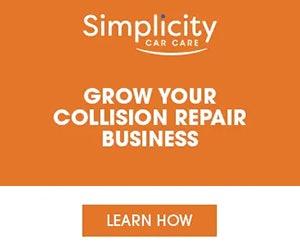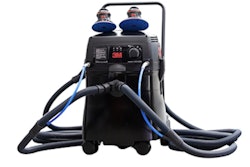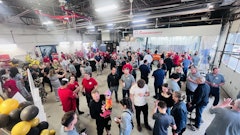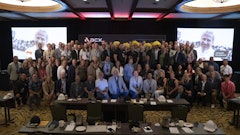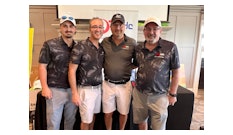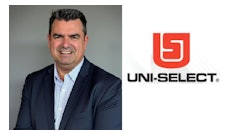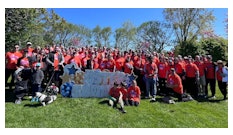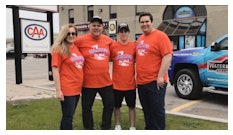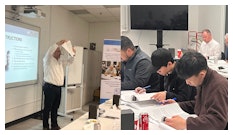
Do your research and remove the guesswork
BY FORTY, THE PROGRESSIVE ESTIMATOR
It isn’t very often that the wheel is reinvented, but what happens to the old wheels when they have been improved upon? With each improvement of accuracy and performance, how long until the older model becomes a past solution to a non-modern problem?
With today’s manufacturing processes and the further development of ADAS systems in more affordable vehicles, we have already begun to see the added difficulty of repair. When is someone going to reach out to our ever-valued estimator? Who is responsible for progressing your estimator’s skillset to creating a truly repair procedure-reflective estimate?
Firstly, we need to look at a traditional estimator and determine their role. They meet the customer and photograph the vehicle; generate a guesstimate to the best of their ability and sell the job; a job well done. But does the work order truly reflect the repair process and does the estimator truly understand what is required to complete the repairs? Not usually.
One-time-use parts, manufacturer-specific part numbers for panel bond, NVH foam, structural foam, hardware used to replace traditionally welded-on components—I could go on and on. A traditional estimator does not truly know the repair; therefore, they don’t write a complete work order, and how could they?
PROGRESSIVE ESTIMATING
We’ve all heard of lean thinking, the concept of Kaizen or continuous improvement, the Theory of Constraints and many more. These ideas apply exceptionally well in the body shop by creating solutions to existing problems.
These lessons are not new; they have been the lifeline of other industries’ success around the world for years, we’re just applying them to our environment. This begs the question; what does it mean to be a progressive estimator? How does the day of a progressive estimator differ from that of a traditional estimator? Do they have the same type of supplemental damages added later?
Being a progressive estimator goes beyond generating a guestimate for a repair. It is the process of identifying all the important key pieces of information required that generates the GPS-like guidance through the repair process for our respected technician. No details can be left out, no detail should be overlooked.
Replacing a quarter panel? To start with, the estimator needs to understand the sectioning locations as well as the repairability matrix. What welder(s) is the tech to use and are there any welding aids that are required? Lap backing plates, butt weld or lap joint? You need to be specific. What if the inner UHSS is damaged once you remove the outer? Is it repairable or not? What panel bond, seam sealer and foams will your technician require to complete the job? Do you even stock the required products and tools required to complete the task?
Let’s pick on the most exemplary repair in this; the Ford F150.
Being a progressive estimator goes beyond generating a guestimate for a repair. It is the process of identifying all the important key pieces of information required that generates the GPS-like guidance through the repair process for our respected technician. No details can be left out, no detail should be overlooked.
Here is my step-by-step workflow:
A STANDARD ESTIMATE:
1. Replace boxside outer
2. Section cab corner
3. Remove and install
4. Blends
5. Sundries, etc.
AN ESTIMATE WITH OEM RESEARCH:
1. Bedside replacement
2. Cab corner sectioning
3. Approved welding wire
4. Backing plates or joint allowances
5. Required hardware and products
6. Perform recalibrations, etc.

If you read and fully understood the OE info from start to finish, then you now know the quantities of all hardware and products that you need. You are familiar with the sectioning locations allowable as per the manufacturer and you know exactly the areas that allow which types of welding or rivet bonding replacement along the repair process. You now have the knowledge that a traditional guesstimator does not possess. Hats off to you.
Add additionals to the estimate: think seam sealer, panel bond, NVH Foam, specialty items, OEM specific hardware, calibrations, etc. Get everything that you just learned about how to repair the vehicle out of that head of yours and onto the estimate. Your prior checkboxes for “replace cab corner” might just expand to including the removal of the back glass. Who would have thought for just a cab corner?
Create a sort of GPS guidance for the repair procedure. Think of yourself as the GPS—it is up to you to plan a co-ordinated route for your technician, providing to him the path of least resistance. Leave no stone unturned. Print out a new set of OEM repair information just for your technician. Highlight the important items required including what products are applied to which areas, what products are required to complete the repair and approved welding types. Even be thorough enough to break down the complex repairs into steps, including the hardware or products required to complete each step. You are becoming a repair advisor; how can you advise your colleagues of your newfound smarts if you don’t have it prepared into some sort of a consumable presentation? Don’t give them an old rusty repair procedure, give it a spit shine and make it a work of art.
You’ve taken yourself from being a traditional guesstimator and transformed into a repair advisor for your technician. If your technician will think about where to section the vehicle, what products they need and where they are applied, everything is already on the parts cart and it is even organized and presented to them in a way that the tech can consume it at lightning speeds—much more effective than watching them fumble around on the computer.
You are an estimator. Your tools of trade include your computer too; it happens to be the most valuable tool you have. You are much faster with computers and used to it as the environment in which you work. You are committed to completing the best OEM repairs, aligning the estimates to reflect a true “work order” fashion. To top it all off, you can answer all the questions that flow your way from the customer, to the technician or your insurance company.
Don’t make the mistake of thinking that your technician will always section the car in the correct location. The knowledge of the last 35 years is most likely his biggest source of ignorance towards the repairs of today.
Once your technician’s start to realize that you can play in the same field with them, they will come to you and ask for the answers. The industry takes notice of true professionals.
If you enjoyed this article, please keep an eye on future content by ‘Forty,’ the Progressive Estimator. Also please drop a comment below the online article—I want to hear your feedback. I want to hear what you think of my process and how it differs from yours. If nothing else, I will settle to know that you read my article; I am an estimator just like you.

